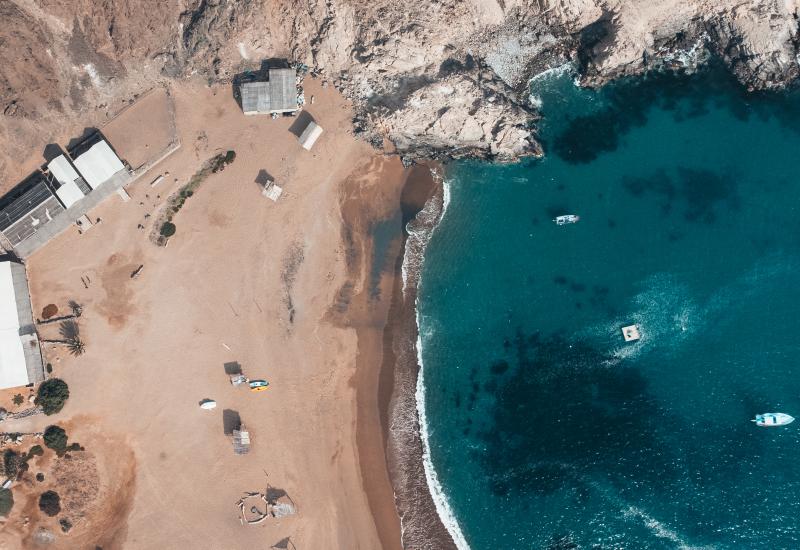10 Freediving Sites that take Underwater Photography to a Whole New Level
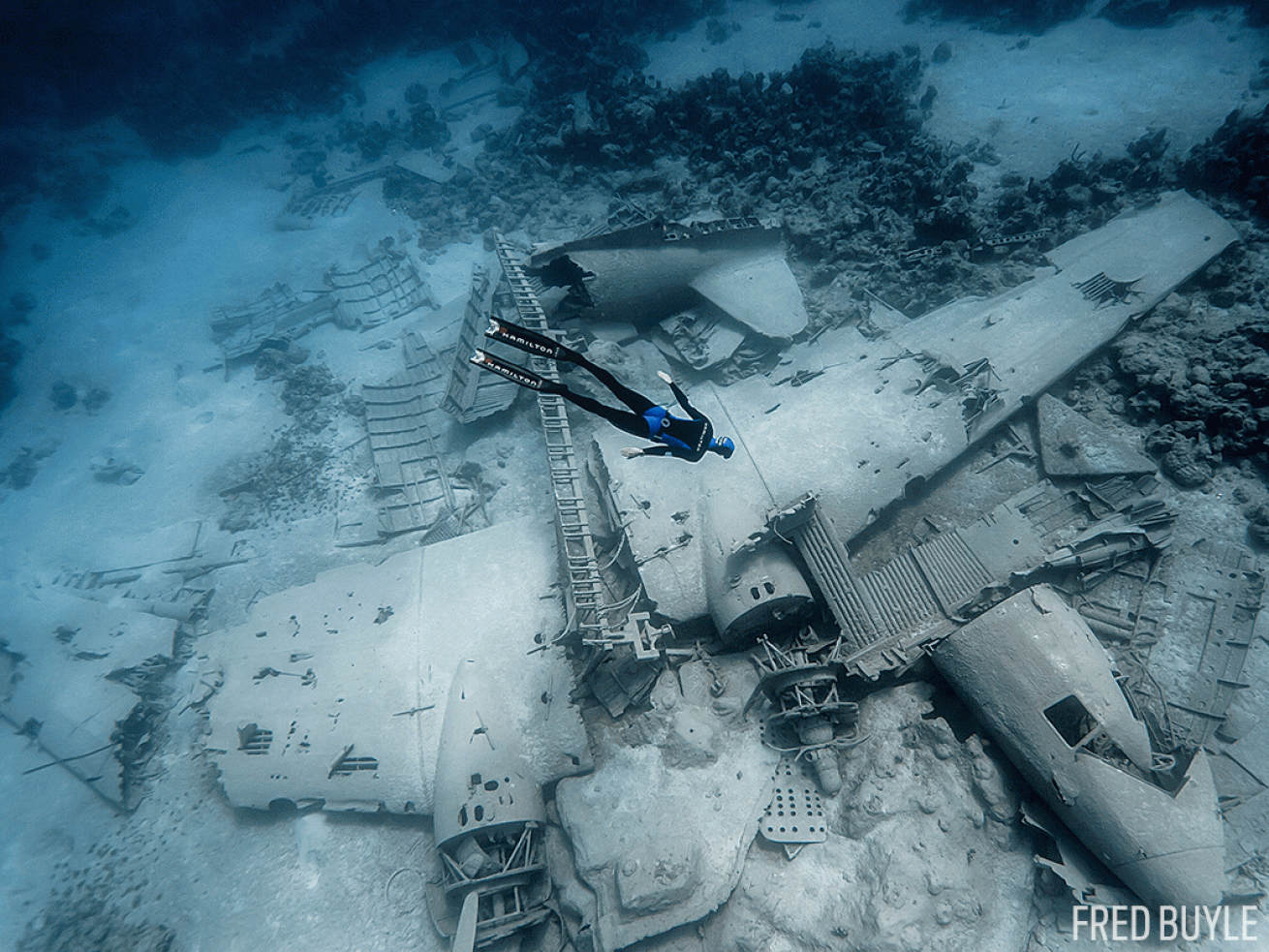
Fred BuyleFlying Underwater
For freedivers like Pierre Frolla, exploring the DC-3 wreck in the Bahamas is just a breath away.
On the surface, snorkeling and freediving appear similar: Both begin as a plunge with just one breath. But below the waterline, it gets complicated. Mark Tilley, a freediving instructor on Grand Cayman, summarizes the differences this way: “With snorkeling, you might have an occasional duck dive, but when you freedive, being on the surface is just preparation to be back underwater.” Start the freediving process by clearing the mind of thought and the lungs of carbon dioxide. Succeed, and you buy yourself time to push your own depth limits, compose a shot, or commune closer and longer with humpback whales and reef sharks — and maybe even Neptune himself.
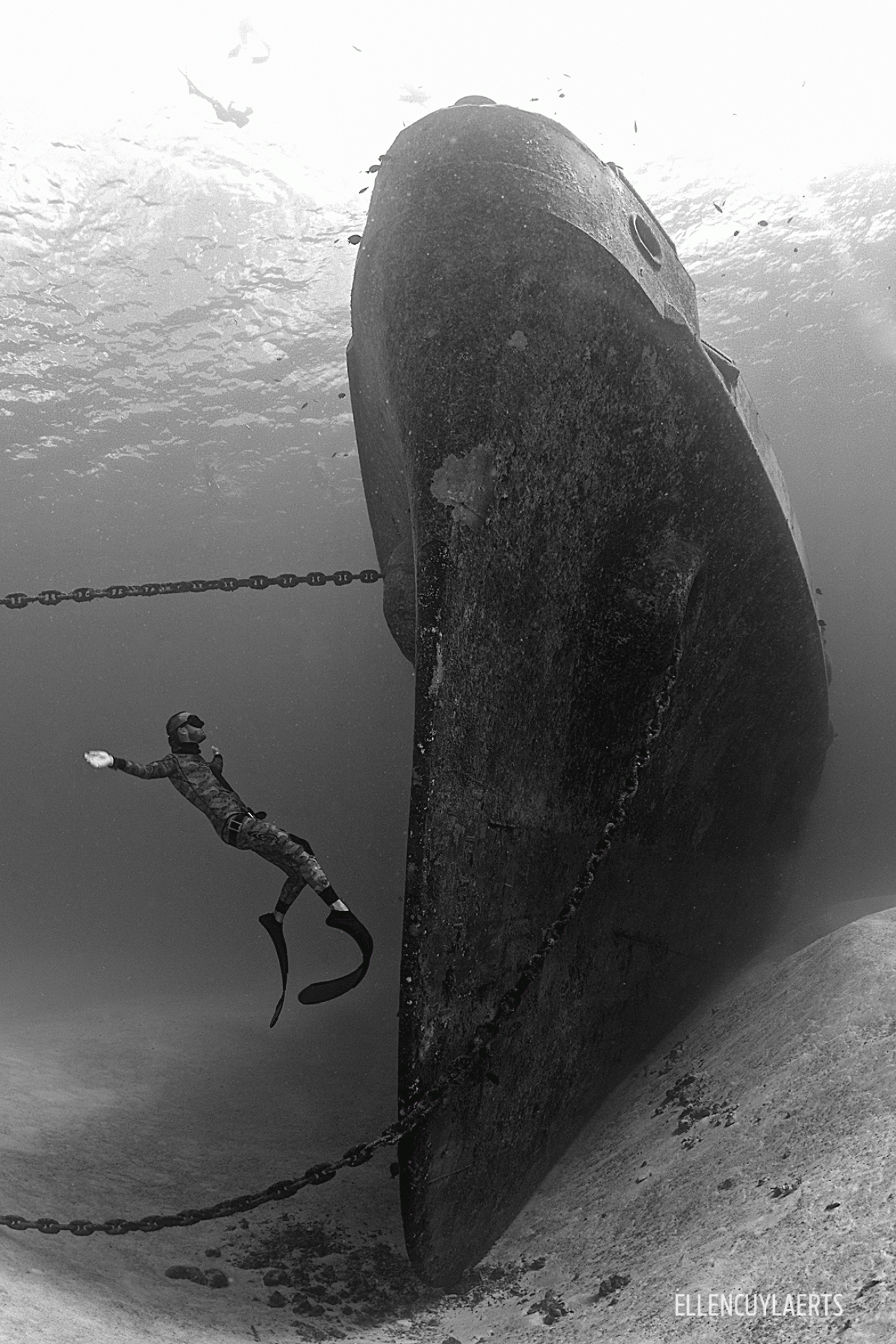
Ellen CuylaertsUSS Kittiwake
It's shallow depth and clear passage ways make this wreck a freediver's jungle gym.
01: USS Kittiwake — Grand Cayman
When scuba instructor Mark Tilley logged 100 supplied air dives on the Kittiwake, he saw an artificial reef. Now, as a freediver, he sees a jungle gym.
“You can hang off a metal bar, pull yourself along a ladder, glide through tight spaces or bounce off a table — it’s good fun,” says Tilley. He credits that fun to the wreck’s clean insides.
With 800 tons of steel removed, including doors, hatches and other possible entanglements, the ship’s passageways became clear for divers, as well as grouper, sea turtles and schools of silversides.
Tilley says that one of his favorite routes leads down the funnel, or smokestack, into the galley, past the head and its mirror, and exits on the Kittiwake’s starboard side, all possible in less than a minute and 20 seconds. It’s a path he knows well because of his history with the wreck on scuba, which burned the ship’s layout into his memory.
There’s another reason Tilley can play on the submarine-class rescue ship at 60 feet, which he calls shallow. He has logged countless hours training at depths well beyond recreational-dive limits.
“A lot of my friends say they just want to be comfortable at 60 feet, but it’s because I have that mental focus under physical duress at 230 feet that I can describe it as a jungle gym — it becomes pretty easy.”
Go Now: Dive Tech Cayman Islands
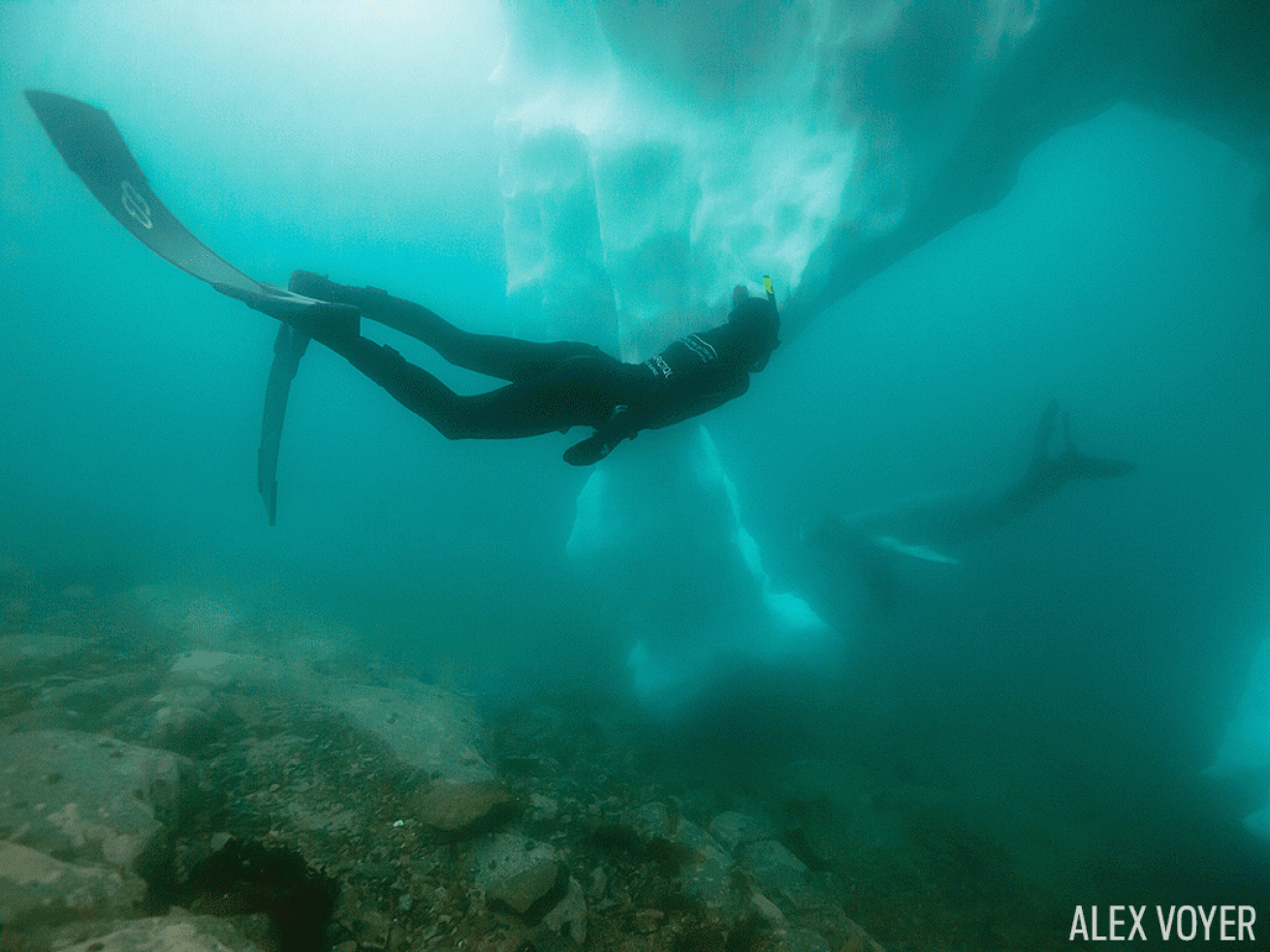
Alex VoyerIncredible Encounters
"Most interactions with large animals — whales, dolphins, seals — happen in the first few meters, so anyone can experience that."
02: Big Animals — Antarctica
“I’m not usually a big fan of really cold waters,” says Fred Buyle, freediving instructor of 25 years. But Antarctica’s allure was too wild to resist.
“The great thing about Antarctica is that the animals are not bothered by too many humans, so they are really curious. It’s somehow very easy to have good interactions.” Buyle’s leopard seal encounters sometimes lasted 10 minutes, sometimes an hour, but one constant was depth. “Most interactions with large animals — whales, dolphins, seals — happen in the first few meters, so anyone can experience that,” he says.
“It’s a misconception that you need to be a superathlete to have experiences like these,” Buyle continues.
Instead, he says, freedivers’ ability to move smoothly in the water and lack of bubbles build the animals’ curiosity.
“Freediving is the ideal tool to interact with large animals,” says Buyle. “I see only advantages.”
Go Now: Oceanwide Expeditions
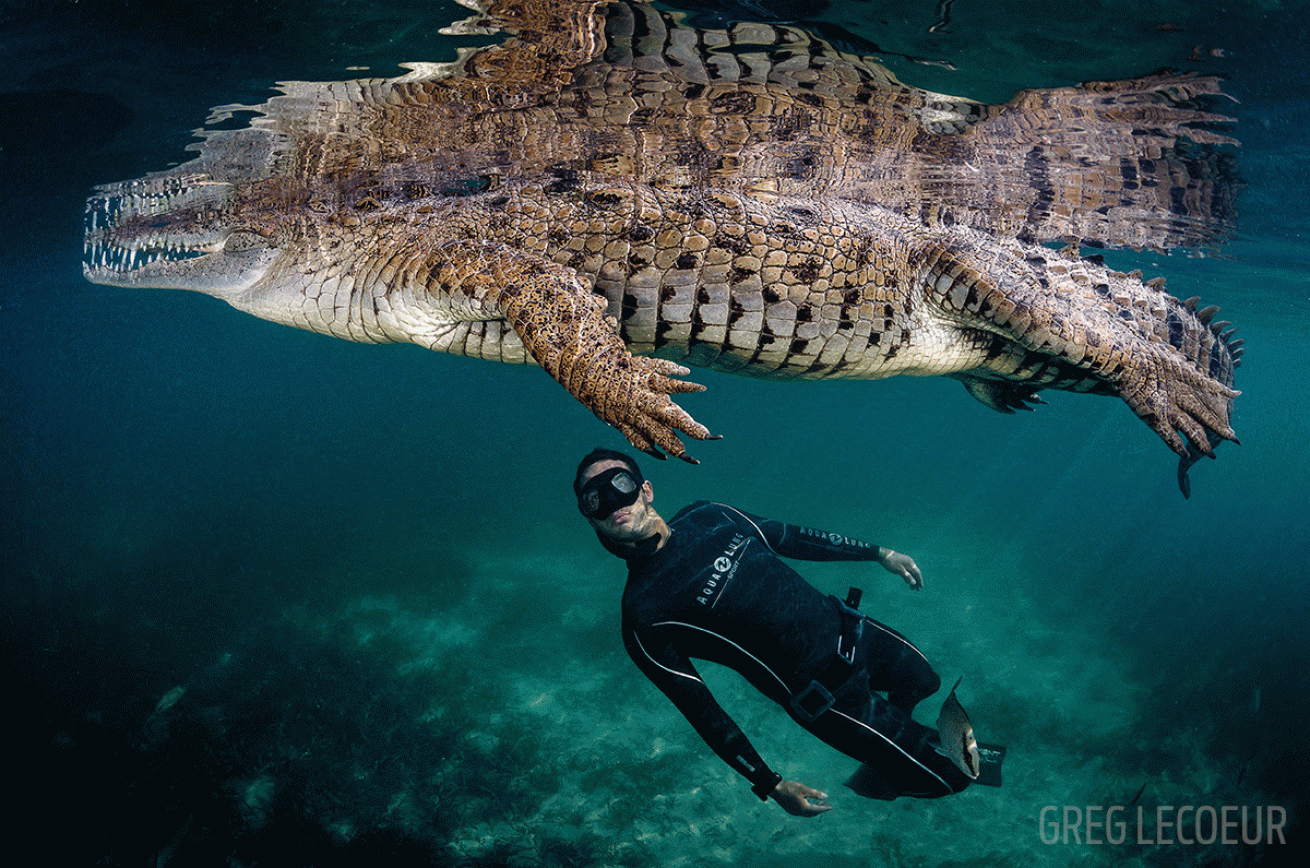
Greg LecoeurGarden of the Queen
This pristine 90-mile arc of mangroves and keys offers some incredible freediving experiences.
03: Gardens of the Queen — Cuba
Like nearly every other Jaws moviegoer, Pierre Frolla left the theater with a debilitating fear of sharks. But when his freediving career took off, including earning three world records in free immersion, he knew he had to take the bull by the horns — or, as he says, “the shark by the teeth.”
A first encounter in Hawaii showed him fear existed only in his imagination. “I understood then that sharks are only fish — they have the same behavior,” he says.
But to swim with crocodiles in Cuba’s Gardens of the Queen — a pristine 90-mile arc of mangroves and keys off the island’s southeastern coast — Frolla had to relearn everything he knew about marine apex hunters.
“Crocodiles are ambush predators that hide and wait to catch something,” he says. “With a shark or dolphin, you dive in front of the animal, mimic it, and stay in the water,” Frolla explains. “When they realize there is no danger, they come.”
With crocodiles, he quickly saw that swimming in front of one only disturbs it.
“Because their eyes are on top, on the surface, I had to swim beside them and under them,” he explains. “When I was on the surface with them, they were trying to understand what happened — they wouldn’t come close.”
When the crocodile approached as if to bite, Frolla couldn’t take the tack he does with sharks, which is to stare it down, even if from just inches away.
Says Frolla, “The crocodile comes and comes, so you have to get out of the water.”
Go Now: Cuba Diving Centers
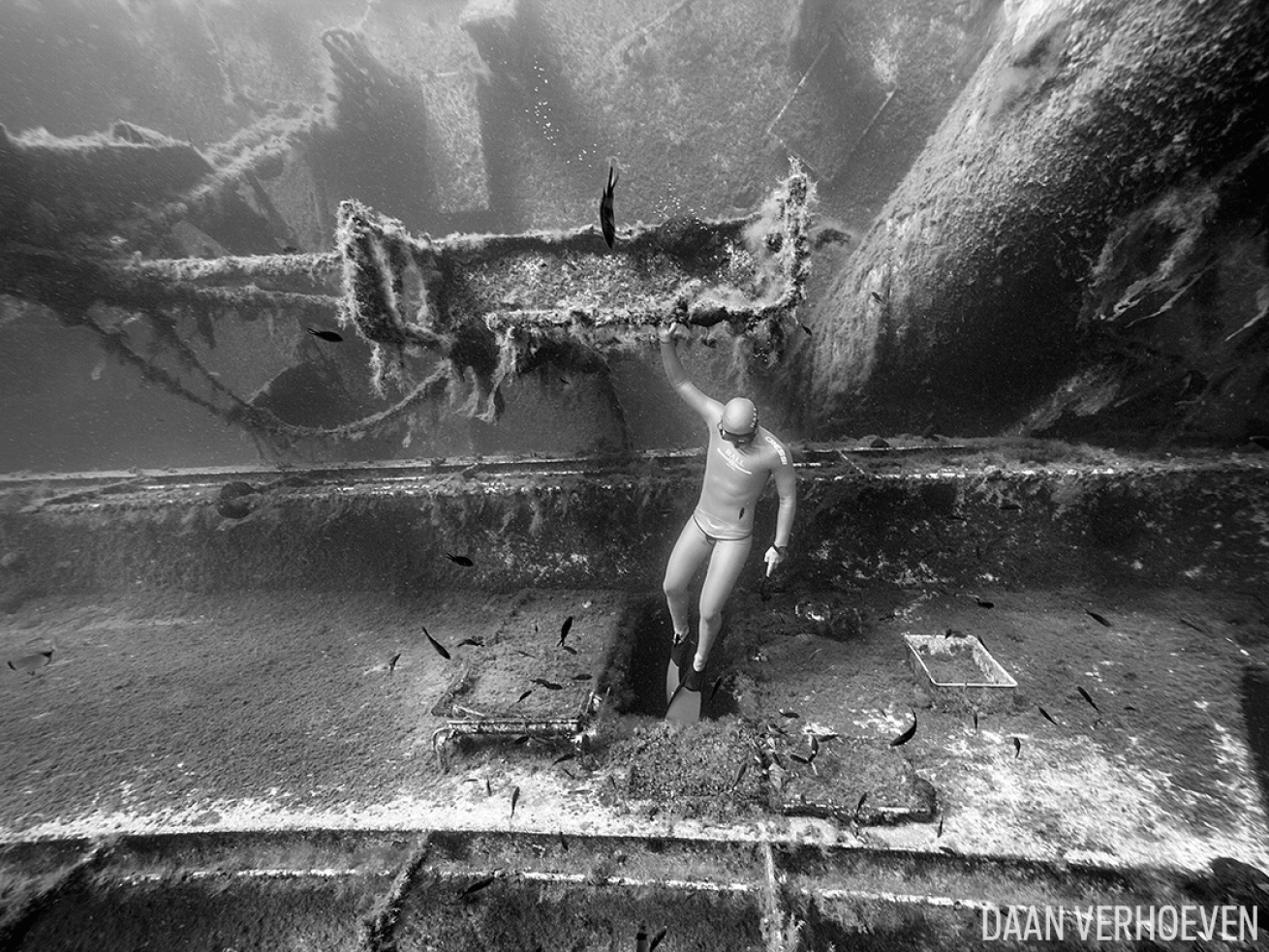
Daan VerhoevenM/S Zenobia
"It's a mega structure so big, it doesn't look like a wreck, but an underwater building."
04: M/S Zenobia — Cyprus
“I have always been fascinated by the idea of exploring human limits and the unknown,” says French freediver Guillaume Néry, who specializes in the discipline of constant weight.
When the record holder day-tripped to Zenobia off the southern Cyprus coast, it was purely for fun. First, he toured the deck containing trucks and marveled at the ship’s 560-foot length.
“It’s a mega structure so big, it doesn’t look like a wreck but an underwater building,” says Néry.
Then he found himself drawn to a stairwell — mundane, except the ship lies on its side. “What I loved most was being upside down, lost in the middle of nowhere. I couldn’t tell where the surface was.”
Though disorienting, overcoming a moment like this can feel like another tiny victory. Says Néry, “In a way, every dive reminds me of my first deep dive, when I felt like Neil Armstrong going to the moon.”
Go Now: Cydive
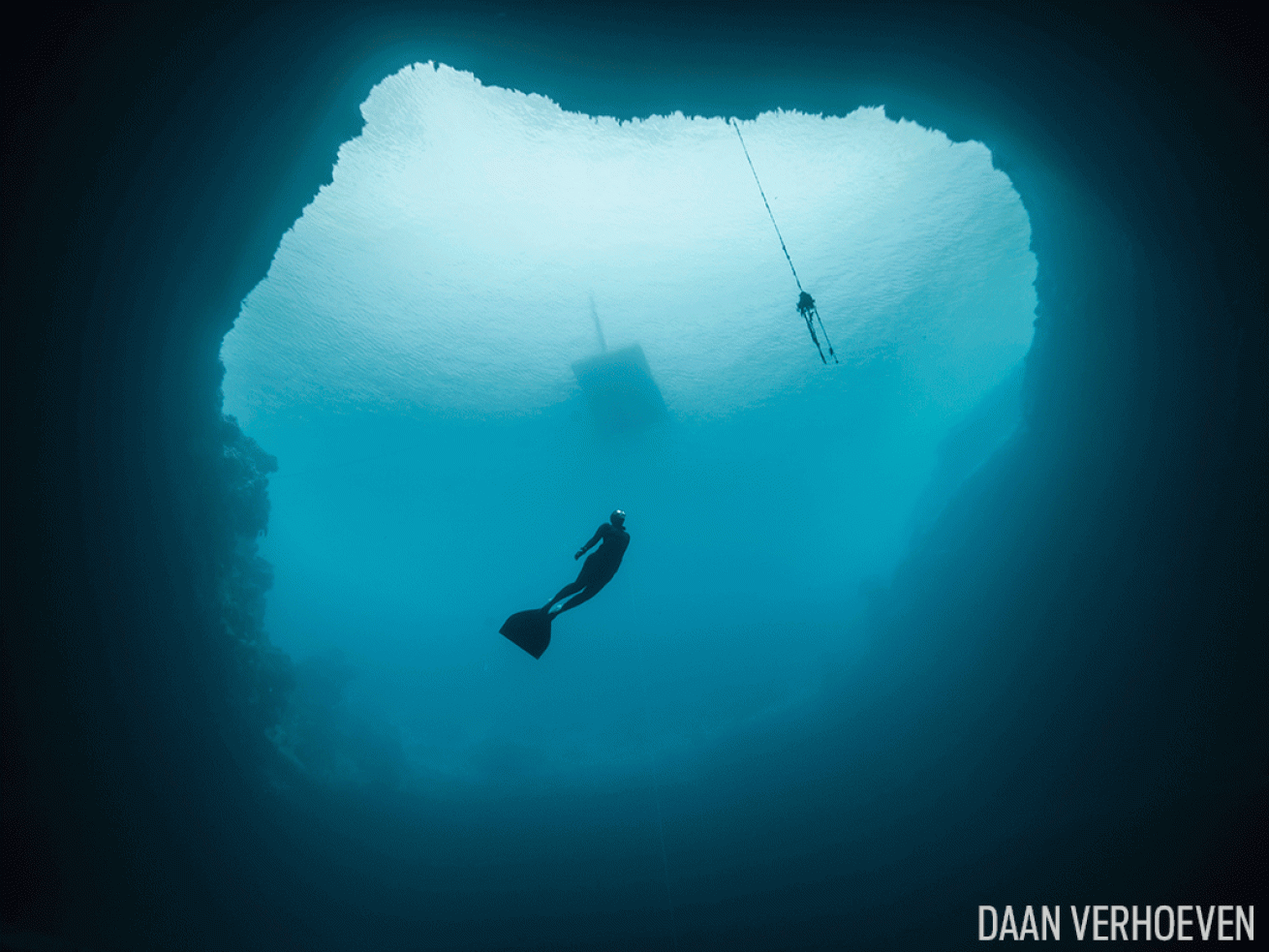
Daan VerhoevenDean's Blue Hole
This inland sinkhole remains unaffected by the weather with a consistent temperature of 79-degrees Fahrenheit.
05: Dean's Blue Hole — Long Island, Bahamas
“A lot of people perceive freediving as an extreme sport, but it’s quite the opposite — it’s rooted in yoga,” says Georgina Miller, a competitive freediver for the U.K. since 2007. Her favorite finning ground in the world is Dean’s Blue Hole, an inland sinkhole that resembles a hot-yoga studio. It is utterly unaffected by weather, making it a 79-degree Fahrenheit swimming pool with a beach entry. “It can be blowing a gale outside, but you have these incredibly protected conditions with no waves or currents, which is what you need to calm down.” Dive inside, and the widening cavern walls resemble an upturned bottle.
“It’s like being in a cathedral with overhead natural light,” says Miller. And in that cathedral, Miller notes that fear isn’t invited, nor is injury. “If you become frightened or stressed, equalizing becomes difficult and the sport simply doesn’t work.”
Go Now: Stella Maris Dive Resort
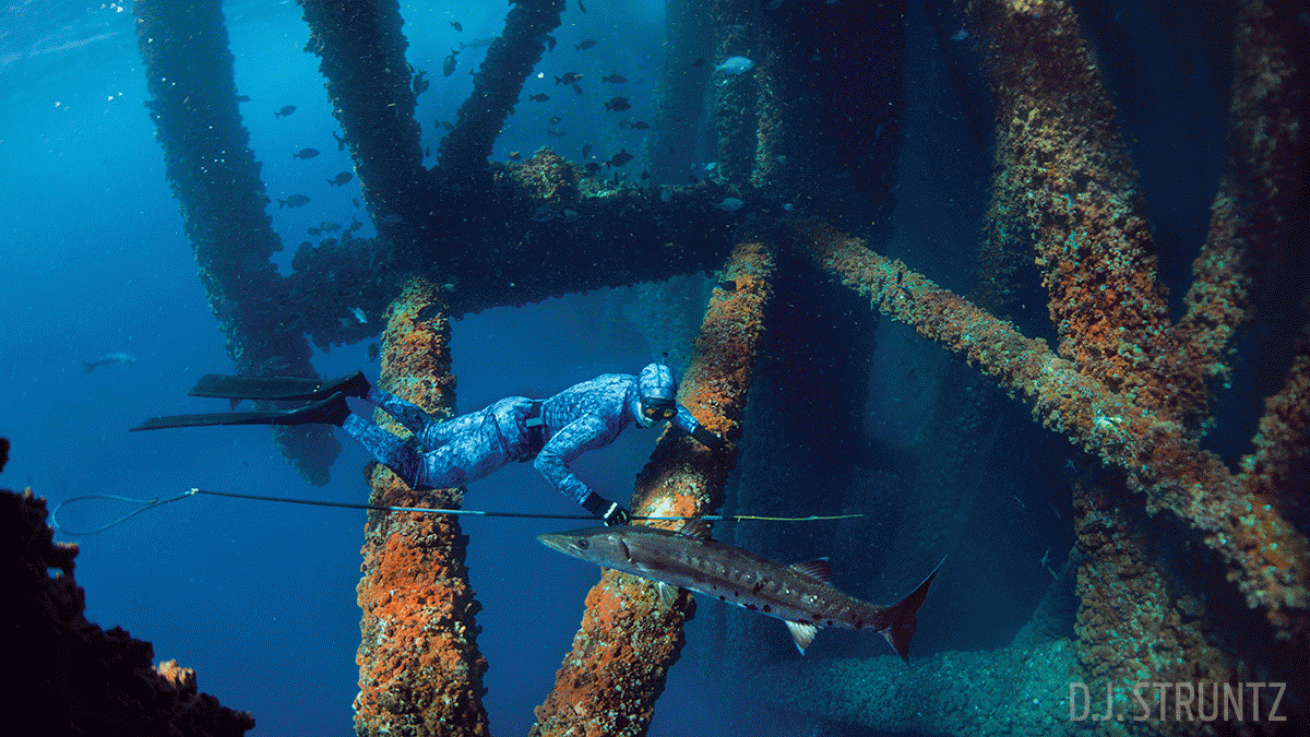
D.J. StruntzGulf of Mexico
"When you go to a marine park, as wonderful as they are, they have telltale signs of the many divers who have been there before."
06: Gulf of Mexico — Louisiana, United States
Craig Clasen sees the irony in recommending the Gulf’s man-made structures as the world’s richest marine environments for freediving — but he credits this vibrancy to nonstop nutrients pumping in from the mighty Mississippi River.
“There’s a rawness that I’m drawn to,” says the Riffe International team freediver. “When you go to a marine park, as wonderful as they are, they have telltale signs of the many divers who have been there before.”
Off the Louisiana coast, Clasen has swum alongside sperm whales, tuna, ocean sunfish and — his most surprising find — a pelagic octopus the size of a thumbnail. Says Clasen, “The Gulf is always throwing you curveballs.”
Go Now: Diviac
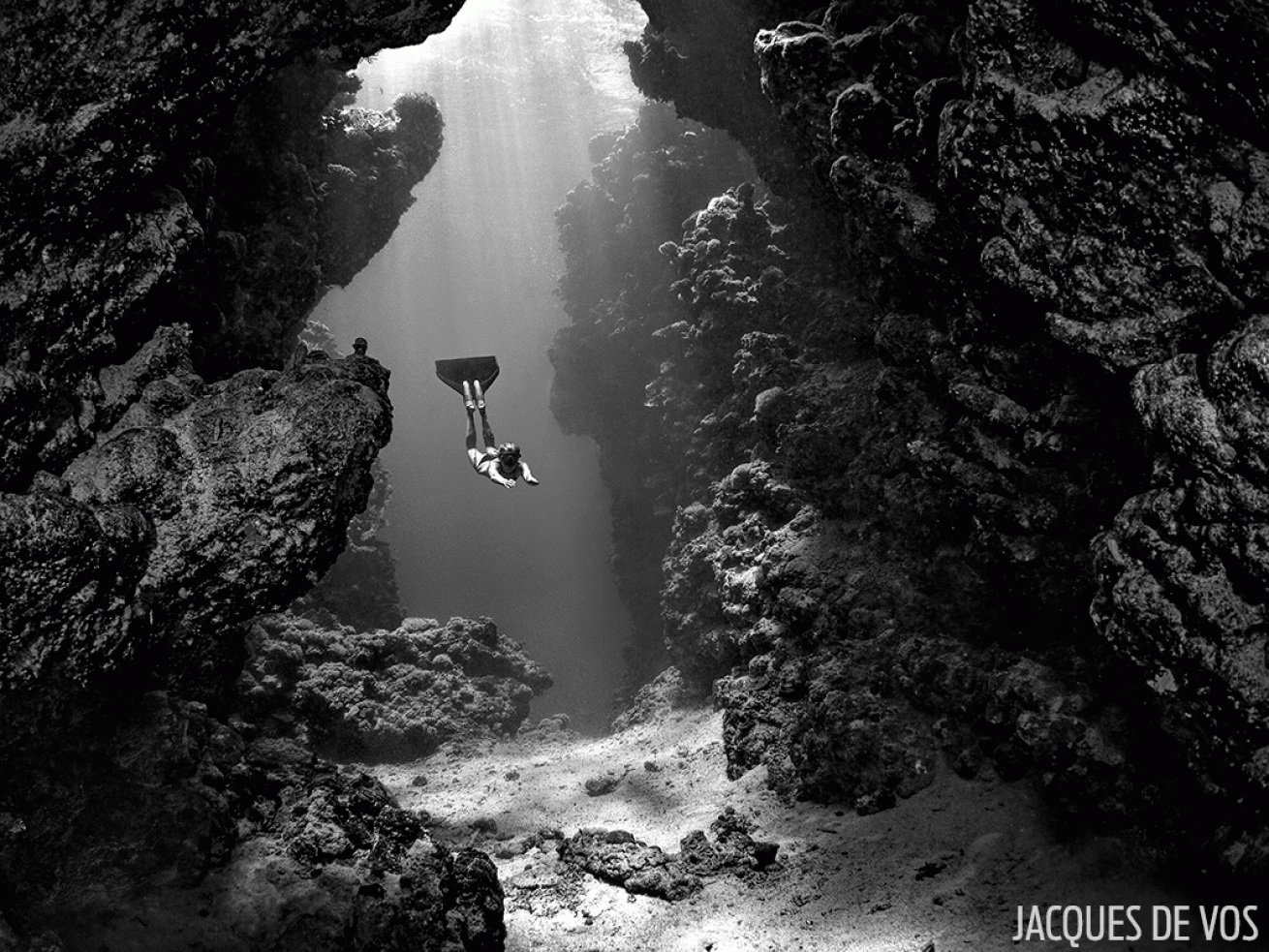
Jacques De VosRas Mohammed National Park
The many caves and corridors along the coast of this marine park add another element of exploration to the freediving experience.
07: Ras Mohammed National Park — Egypt
For scuba divers, this marine park’s attractions — legions of sharks, one of the most freighted World War II wrecks and schools of fish so massive, they envelop onlookers — are all offshore. But what Nadia Borozdenkova, AIDA freediving instructor of four years, finds most compelling about the Red Sea is accessible by car: the Swisscheese shoreline with caves and corridors appearing altered each hour by the sun’s changing angles.
“Nobody is deep-diving there,” she says, explaining her attraction to the coast, all of which is a sheer dropoff. These sites aren’t named or mapped. “You don’t know where the exits are when you start down a corridor.”
“We all have our fear,” says Borozdenkova of entering caves. “Going into the unknown, you might have to turn back earlier than you’d hoped, or if you’re brave enough, continue to the end.”
This makes for true adventure. “You are exploring nature, and at the same time, exploring yourself,” says Borozdenkova.
Go Now: Ras Mohammed National Park
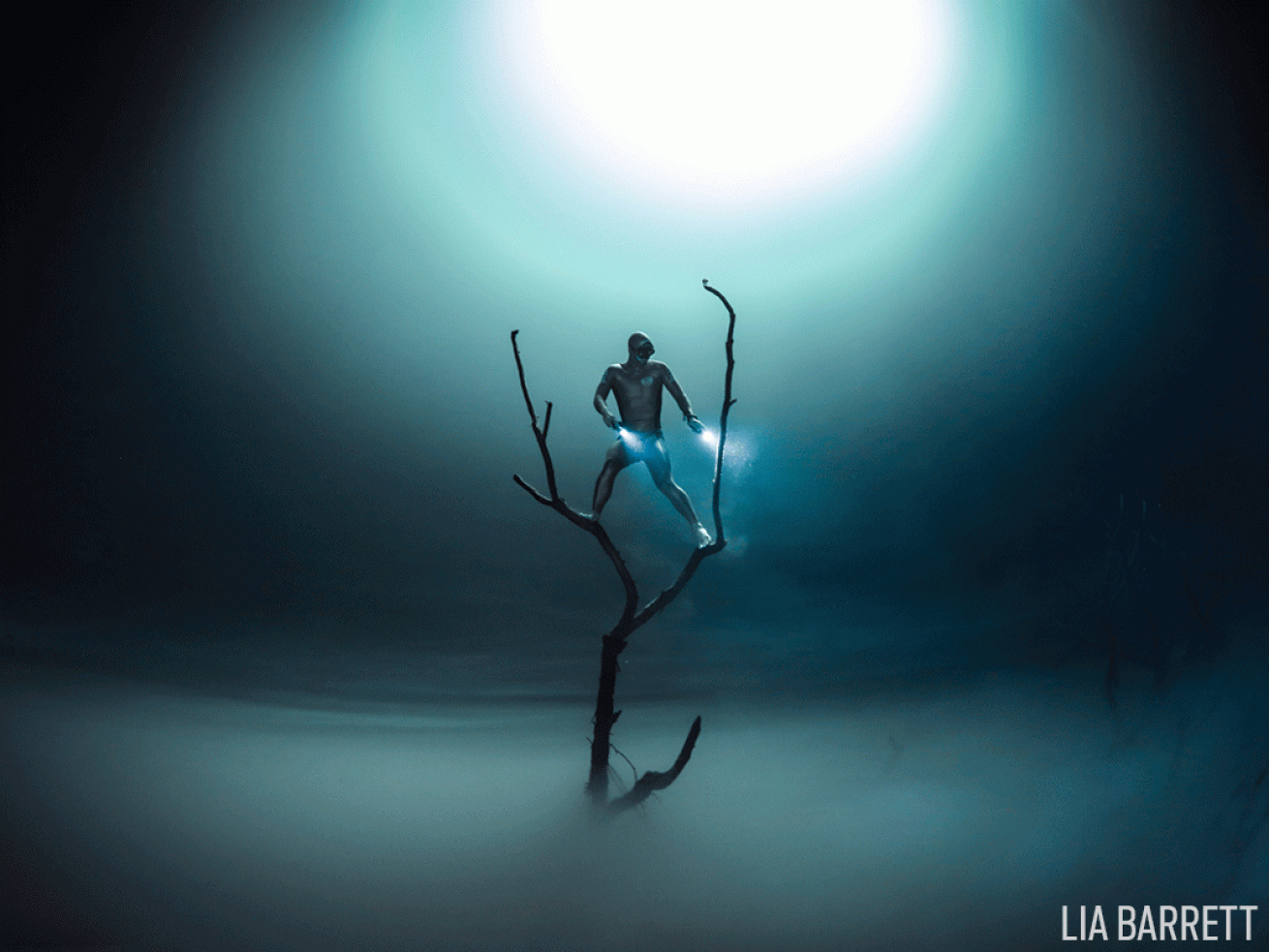
Lia BarrettRiviera Maya
"Angelita is one of the best because of the dramatic landscape. It looks spooky."
08: Riviera Maya — Mexico
In choosing an arena for freediving, Alexey Molchanov argues you can’t do much better than the cenotes of the Yucatan Peninsula.
“Without cenotes, it’s hard to get to deep depths with warm water, no waves, no currents and no water traffic,” he says. Plus, it’s fresh water. “Fresh water gives you negative buoyancy — the free fall is faster. But it’s harder to get back up.”
Of his favorites, Molchanov lists the Pit, Casa, Lagoon and Angelita. “Angelita is one of the best because of the dramatic landscape,” he says. With the trees and halocline, “it looks spooky.”
Molchanov describes the descent into another favorite, Lagoon: “In the first 30 feet, you have only about 10 feet of visibility. Then, from 30 to 90 feet, it’s crystalclear, and then from 90 to 240 feet, it’s complete darkness.”
“The light changes can be really exciting,” Molchanov says. “And I like the fresh water — it feels somehow almost sweet.”
Go Now: Cave Training Mexico
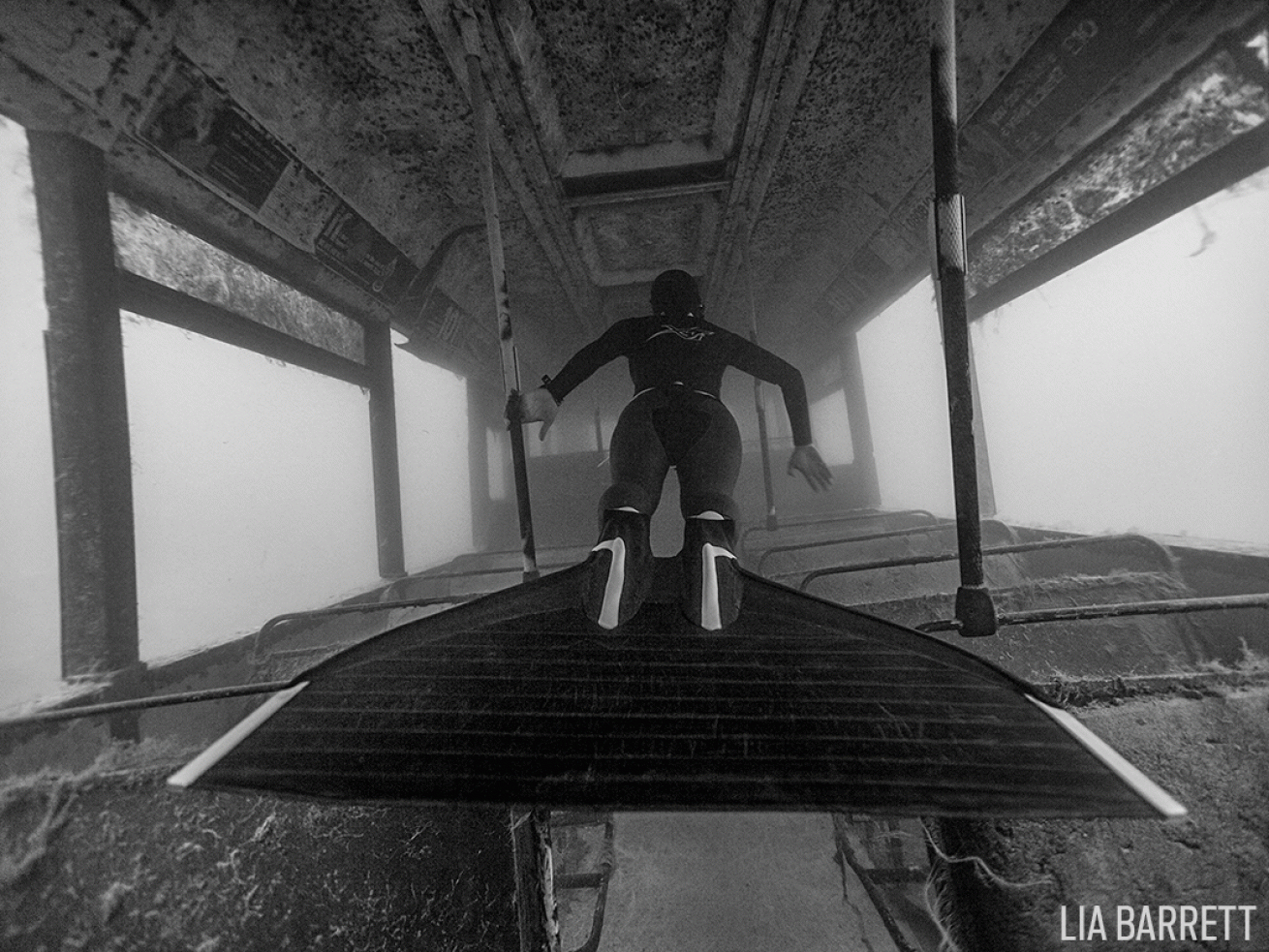
Lia BarrettThe National Diving and Activity Center
20-foot visibility means freedivers exploring the depths of this quarry need to rely on faith as well as sight.
09: The National Diving and Activity Center — United Kingdom
For Beci Ryan, freediver of three years, the big draw of finning inside objects, including the sunken bus inside the National Diving & Activity Centre quarry in Chepstow, is how surreal it feels. Before she could penetrate, she had to ready herself for the dive — and for being unable to locate the bus from the surface, thanks to 20-foot visibility and the vehicle’s 52-foot depth. “I couldn’t see the bus at all, so I had to go down relying on faith,” she says. Ryan admits to anxiety, but says, “I recognized the nerves as nothing more than voices in my head, so I relaxed my breathing — and then the bus appeared out of the gloom, and I was transfixed.”
For Ryan, one attraction of freediving is that it slows time. “When you prepare to freedive, you slow your heart rate with a few deep belly breaths,” she says. “Your body literally slows down, and everything slows down in a way.” Which makes the two minutes of submersion stretch to a longer dream sequence of sorts. “I wish I could have stayed longer — I wanted to hop in the driver’s seat.”
Go Now: National Diving & Activity Centre
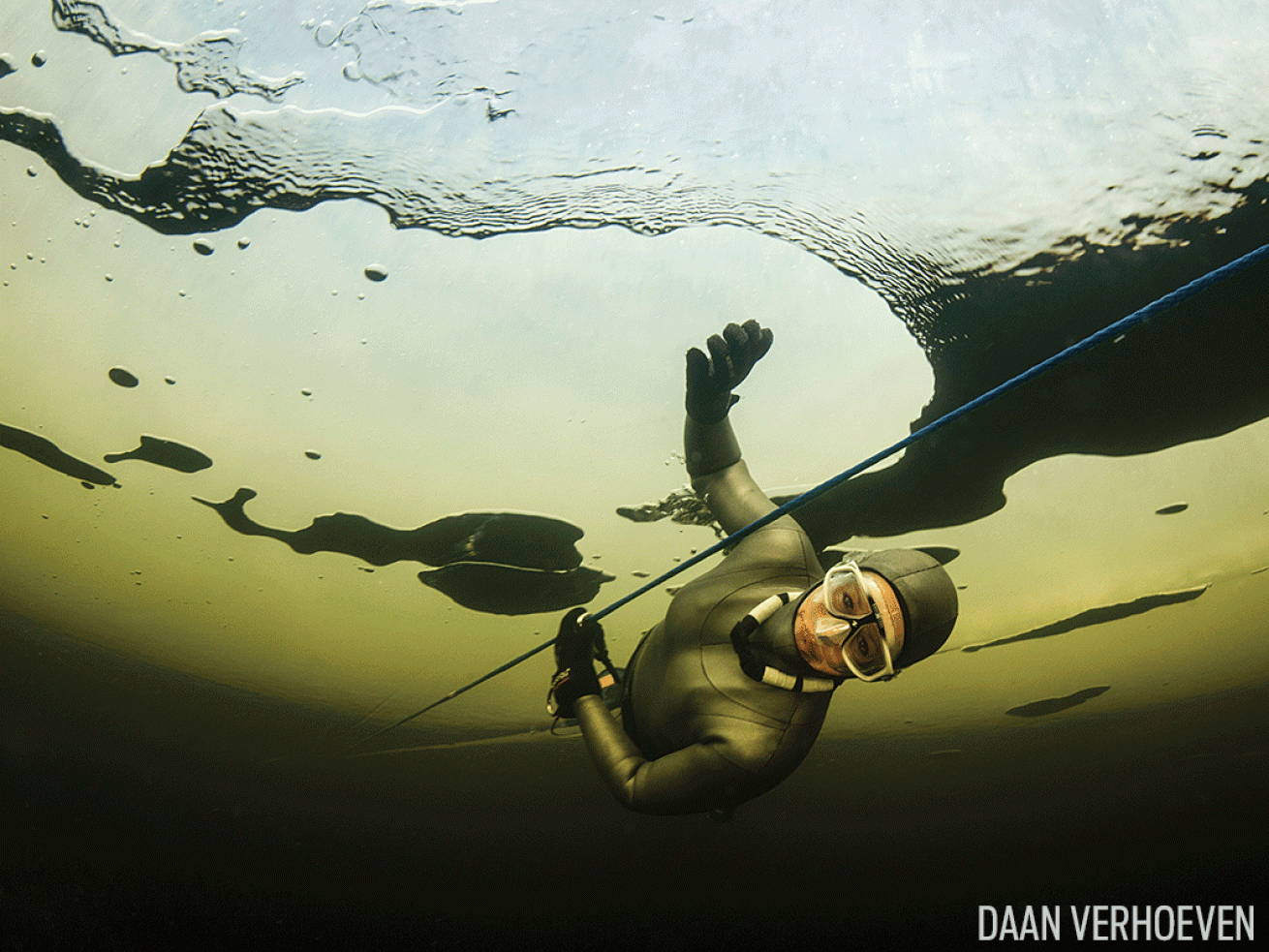
Daan VerhoevenLake Päijänne
Diving under the ice in 36-degree Fahrenheit water is just another way to enhance the challenge of freediving.
10: Lake Päijänne — Finland
When French freediver Chloé Villaume shared her plans to freedive a frozen lake in Asikkala, Finland, with legendary under-the-ice freediver Stig Severinsen, he prescribed an elaborate training plan — which she promptly ignored. “I wanted to live it fully and not prepare,” says the tec-diving instructor.
She went ahead, even forgoing a wetsuit several times in the 36-degree Fahrenheit water. “It was silly to dive without the suit, but I wanted to see if I could because it felt a little off-limits,” she says.
At the lake’s edge, she warmed in a sauna before walking 200 feet to a hole in the ice. She took one breath and launched. “I thought, ‘If you wait, you freeze.’”
Under the ice, Villaume pulled herself along a line connecting two openings. The water, thanks to decomposing trees, appeared green. Eerie.
“There is a little fear of being trapped,” she says of the 40-second experience in water so cold, it seemed to bear down with intense pressure, “like someone hugging you all over, super-tight.”
When she re-emerged, the touch of fellow divers helping her up proved painful, but she stayed 20 more minutes atop the frozen lake to watch peers make similar attempts.
“My hair was frozen like a helmet of ice,” she says. Of the adrenaline rush, she explains, “It’s like jumping from a bridge. A lot of people ask, ‘Why do it?’
“But of course, right after, I felt really good, and all I wanted was to go again.”
Go Now: Diviac
Learn More
Disciplines within freediving include:
Constant weight (CWT): Requires a diver to follow a guide line to a particular depth while relying on fins, a monofin or arms only. This is called constant weight because the diver is not allowed to drop any lead during the skill.
Dynamic with fins (DYN): A horizontal swim to cover the greatest distance possible.
Static apnea (STA): A timed breath-hold.
Free immersion (FIM): Considered the purest discipline because no fins are allowed. Instead, divers pull themselves down a guide line either head or feet first.
Get Certified:
Many agencies certify freedivers, from international orgs to regional groups. Some of the most popular are:
Freediving Instructors International




